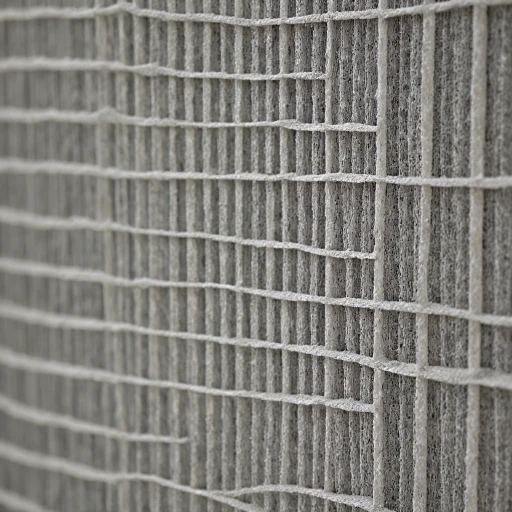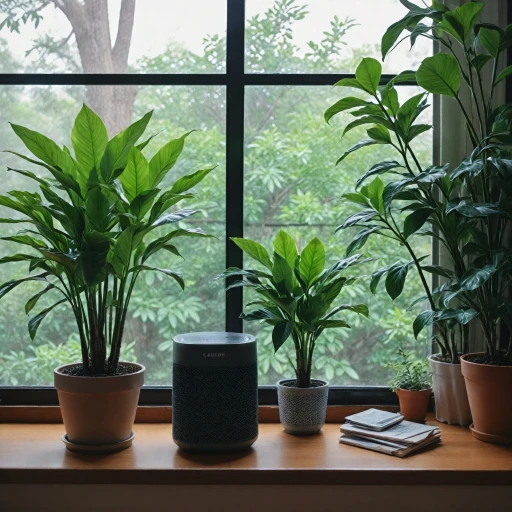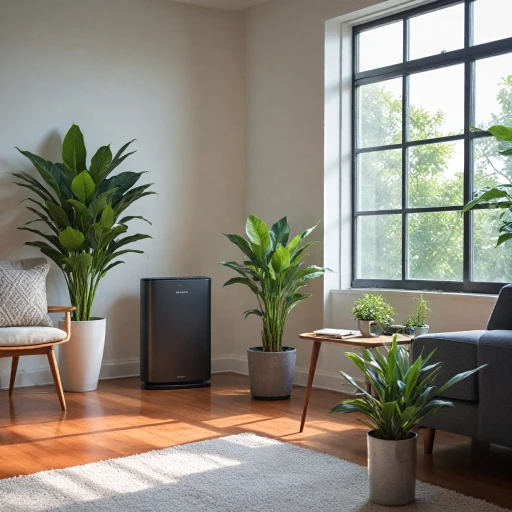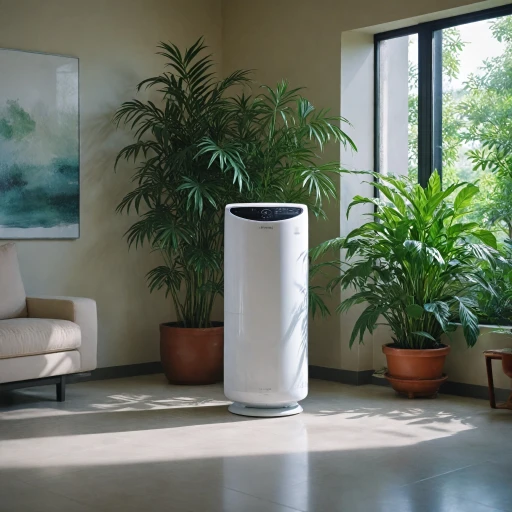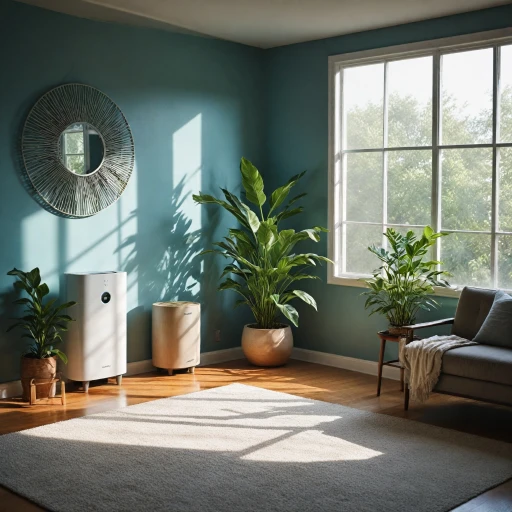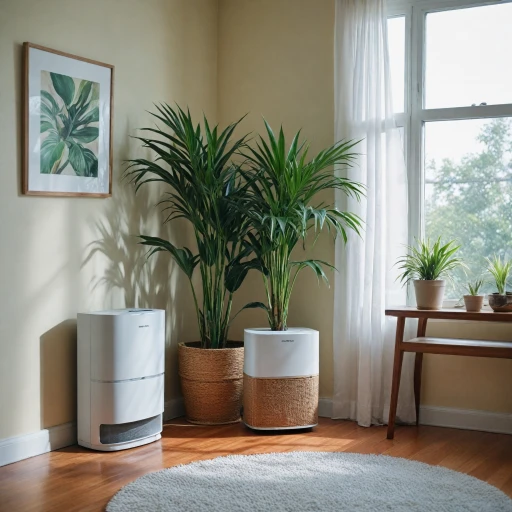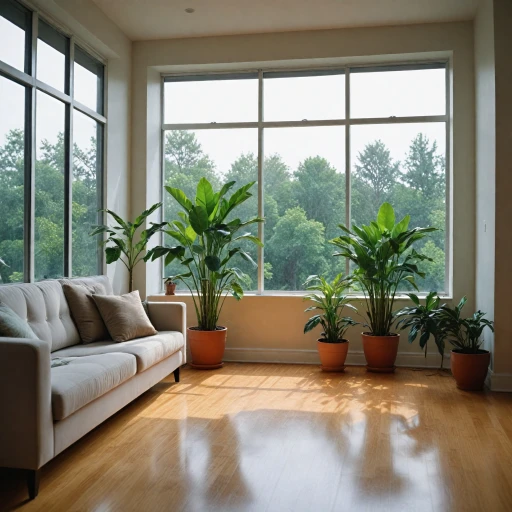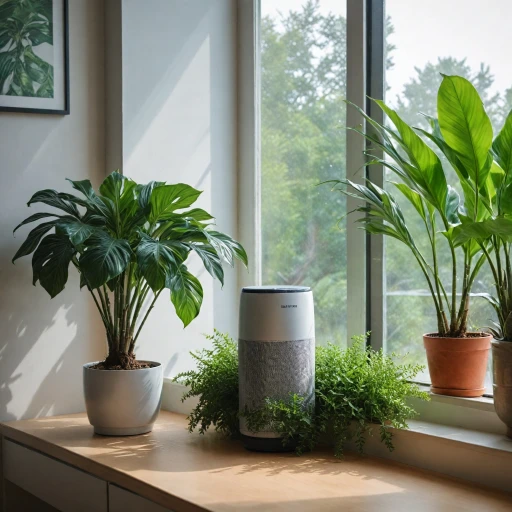What are VOCs and Why Should You Care?
The Invisible Threat of VOCs
Volatile Organic Compounds, commonly known as VOCs, are a significant concern when discussing indoor air quality. These compounds include a variety of chemicals emitted as gases from certain solids or liquids, such as paints, cleaning supplies, varnishes, and adhesives. In fact, VOCs are pervasive in most homes and workplaces, making them a critical factor to consider for anyone looking to maintain a healthy indoor environment.
Why VOCs Matter in Your Indoor Environment
Why exactly should you care about VOCs? Well, the presence of these organic compounds indoors can contribute to a range of health issues. From minor irritations to serious long-term effects, VOCs affect different people in varying degrees. Common symptoms include eye, nose, and throat irritation, headaches, and in some cases, more severe respiratory problems.
Protecting Against VOCs: Choosing the Right Solution
When exploring solutions to counter these threats, air purifiers specifically designed to remove VOCs can play a central role. It's essential to opt for products that incorporate advanced filtration technology to improve air quality effectively. Models like Alen Breathesmart or IQAir MultiGas utilize a combination of HEPA and activated carbon filters to enhance your air purification experience by targeting not just particulates but also gaseous pollutants.
For those concerned about the financial aspect of investing in an air purifier to combat VOCs, it's worthwhile to explore options available under various programs. To learn more about eligibility avenues and possible savings, you can check FSA eligibility for air purifiers.
How VOC Air Cleaners Work
Mechanisms Underpinning VOC Air Cleaners
Volatile Organic Compounds (VOCs) are a significant concern when it comes to indoor air quality. Understanding how VOC air cleaners operate is crucial for ensuring that your air is as pure as possible. The process begins with air purifiers pulling in air from the surrounding environment. A fundamental feature in efficient units is the combination of filters that trap and neutralize VOCs effectively. Here's a breakdown of how they work:- Activated Carbon Filter: These filters are renowned for their ability to remove VOCs. The carbon in the filter attracts VOC molecules like a magnet, trapping them within its structure, thus keeping them from circulating back into the air.
- HEPA Filter: While HEPA filters primarily excel at capturing larger particulates, some models, such as the True HEPA variety, can also contribute to minimizing VOC presence by trapping particulate-bound organic compounds.
- Filtration Technology: Advanced technologies in air purifiers, such as those found in the Alen BreatheSmart or IQAir MultiGas models, increase their efficacy by enhancing the filtration process to target VOCs specifically.
- Fan Speed and Sensor Technology: Enhanced models, like Austin Air products, often incorporate variable fan speeds and smart sensors to dynamically adjust to the air quality levels, ensuring efficient VOC removal without unnecessary power consumption.
Benefits of Using VOC Air Cleaners
The Advantages of Utilizing VOC Air Purifiers for Indoor Environments
Understanding the numerous benefits of VOC air purifiers highlights why they are becoming an essential appliance in many homes and offices. By improving the air quality indoors, these purifiers contribute to a healthier living space.- Efficient Removal of VOCs: One of the primary benefits of VOC air purifiers is their ability to effectively remove volatile organic compounds (VOCs) from the air. These units are designed to target pollutants such as formaldehyde, benzene, and other harmful chemicals that can be found in household products like paints, upholstery, and cleaning solutions.
- Enhanced Air Quality: By using advanced filtration technology such as activated carbon and true HEPA filters, VOC air purifiers can significantly improve the air quality. This is vital for individuals with allergies or respiratory conditions, as clean air can help reduce symptoms and improve overall health.
- Odor and Smoke Reduction: VOC air purifiers are particularly effective at mitigating odors and smoke. The activated carbon filter specifically targets gases and smells, providing a fresher environment in areas prone to smoke or kitchen odors. Learn more about choosing the right air purifier to combat cigarette smoke.
- Smart Technology Integration: Many modern purifiers, such as Alen BreatheSmart and Austin Air, feature smart technology like clean air sensors and adjustable fan speeds that enhance user experience by automating the air cleaning process and tailoring it to the air quality detected.
- Cost Efficiency: Despite the seemingly high unit price initially, investing in a high-quality VOC air purifier can actually be economical in the long run. Quality filters like those in the IQAir MultiGas have longer lifespans and superior effectiveness, reducing the need for frequent replacements and providing cleaner air for extended periods.
Key Features to Look for in a VOC Air Cleaner
Selecting the Ideal Features for Optimum Efficiency
When choosing VOC air cleaners, certain features play a crucial role in their effectiveness. Here's what to consider:- Filtration System: The heart of any air purifier is its filtration technology. Look for units incorporating a true HEPA filter and activated carbon. The HEPA filter captures small particles, while the carbon filter is essential for removing VOCs and other pollutants from the air.
- Fan Speed and Airflow: Consider air purifiers with multiple fan speed settings. The ability to adjust the speed allows you to manage both noise levels and energy consumption, adapting to different situations and room sizes for optimal air quality improvement.
- VOC Sensor: Some advanced models include sensors that detect VOC levels, automatically adjusting the unit’s performance for cleaner air. This feature, like those found in the Alen Breathesmart series, ensures efficient air filtration tailored to real-time needs.
- Coverage Area: Match the air purifier to your space size. Units like the Austin Air are designed for larger areas, while other compact models are better for individual rooms or smaller spaces.
- Quality and Durability: Invest in recognized brands known for reliability and performance. Brands like IQAir consistently produce high-quality products that offer long-term value despite a potentially higher unit price.
- Maintenance Ease: Regular filter replacements are necessary to maintain effectiveness. Look for purifiers with easy-access, cost-effective filters that don’t compromise on filtration quality.
- Price: Consider your budget but remember that investing a bit more in high-quality technology can yield better results in the long run, ensuring cleaner indoor air for years.
Comparing Different Types of Air Purifiers
Comparing Air Purification Options: Finding the Right Fit
When it comes to selecting an air purifier to effectively remove VOCs and enhance indoor air quality, understanding the differences between available options is crucial. Here’s what to look for:- HEPA versus True HEPA Filters: Many air purifiers, such as the Alen Breathesmart and Austin Air, use HEPA filters to trap microscopic particles. A True HEPA filter is certified to capture 99.97% of particles as small as 0.3 microns, ensuring high filtration quality and efficiency.
- Activated Carbon Filters: These filters are essential for absorbing smoke and multiple volatile organic compounds. For example, models featuring activated carbon filters, like the IQAir Multigas, provide superior protection against VOCs.
- Fan Speed and Filtration Technology: Effective air purifiers offer adjustable fan speeds to manage the pace of air circulation. Products with advanced sensors, such as Clean Sense technology, ensure optimal air quality by adjusting fan speed according to VOC levels.
- Specialized Filters for VOCs: Some air purifiers, such as Alen Air models, come with specialized filters to target and remove VOCs specifically. This can be beneficial if your primary concern is dealing with organic compounds indoors.
- Unit Price and Value: While price can be a determining factor, it's important to evaluate the long-term benefits of filtration capacity and filter replacements. Price-comparable options might differ significantly in their ability to capture VOCs effectively.
Tips for Maintaining Your VOC Air Cleaner
Simple Steps to Keep Your VOC Air Cleaner Running Efficiently
Maintaining your VOC air purifier is essential for ensuring it operates at peak performance and provides you with clean air consistently. Here are some easy steps to follow:- Regularly Check and Replace Filters: VOC air purifiers often feature multiple filtration layers, including HEPA and activated carbon filters, essential for removing volatile organic compounds and improving air quality. To ensure efficiency, inspect these filters regularly and replace them as recommended by the manufacturer.
- Adjust Fan Speeds Accordingly: Many purifiers, such as the Alen BreatheSmart, offer variable fan speed settings. Adjust these according to your room's air quality levels to maximize energy efficiency and filter lifespan.
- Ensure Optimal Placement: Position your purifier in an area where air can circulate freely. Avoid placing it in corners or behind furniture. This placement enhances the air cleaner's ability to filter VOCs and other pollutants effectively.
- Regular Cleaning and Maintenance: Dust and debris can accumulate on the exterior of your unit, affecting its efficiency. Wipe down the surfaces and ensure no blockages obstruct the air intake or outlet points.
- Utilize Air Quality Sensors: Many modern units, like those with Clean Sense technology, incorporate sensors to monitor air quality and adjust settings automatically. Ensure these sensors are unobstructed and functioning correctly.
- Monitor Performance and Unit Price: Keep track of your purifier's performance and any increases in operational costs to determine if it’s time for a replacement or upgrade to a more efficient model, such as the IQAir MultiGas.

